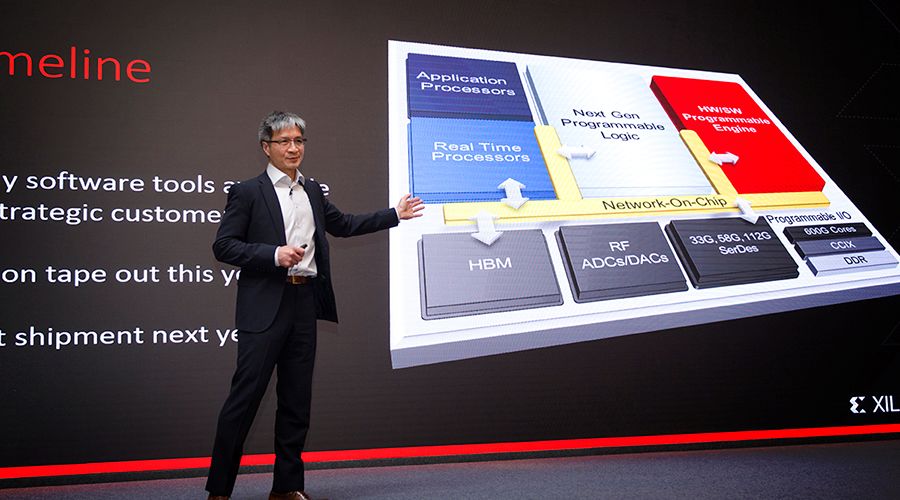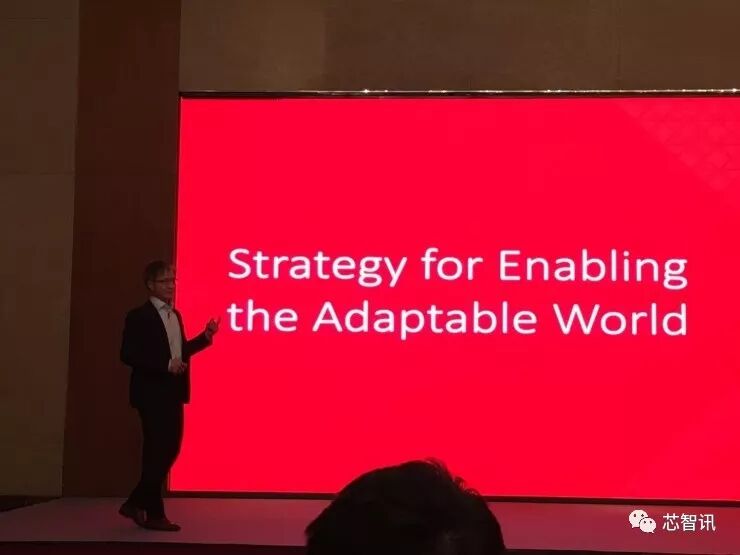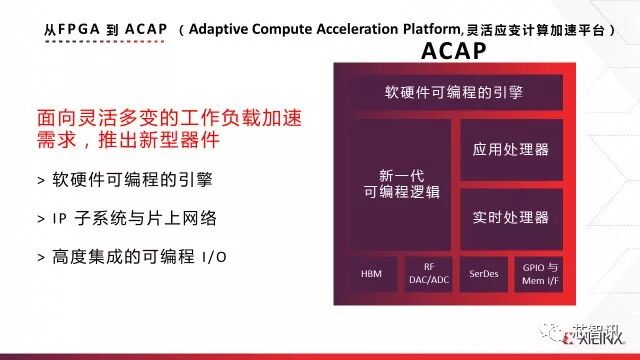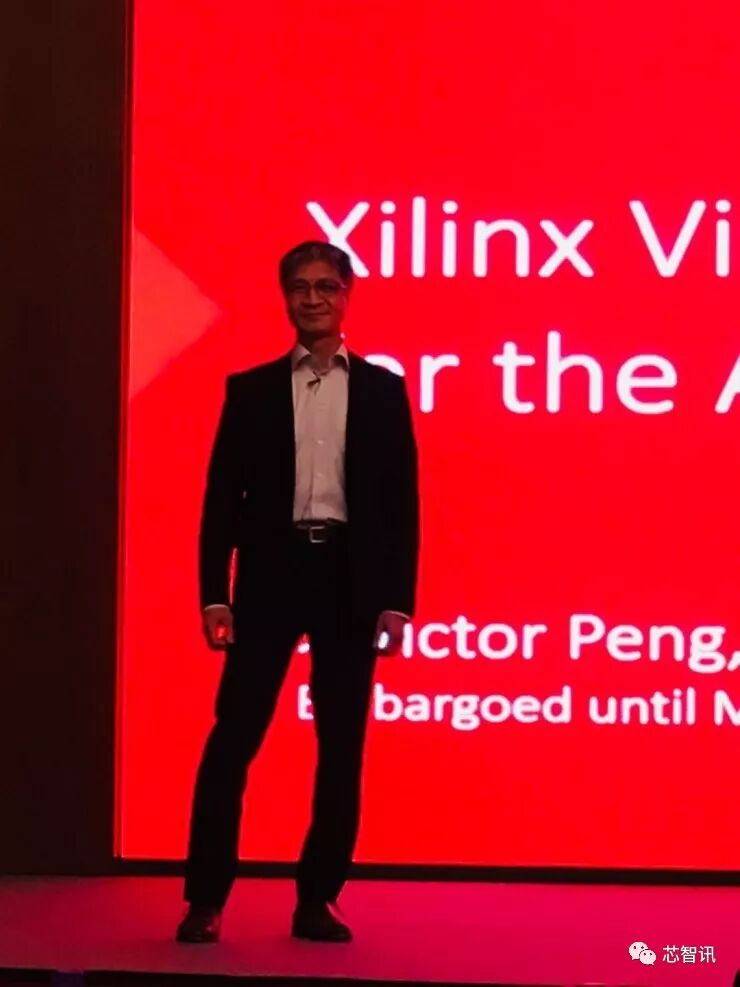
For Xilinx, the world’s largest FPGA manufacturer, 2018 can be seen as a new starting point. On January 29 of this year, Xilinx welcomed its fourth CEO, Victor Peng, a veteran with ten years at Xilinx and extensive experience in CPU, GPU, and FPGA. More importantly, Xilinx has also embraced a new development strategy, particularly focusing on software.
However, Xilinx has another major move.
Creating a Flexible and Versatile World
On March 16, 2018, Xilinx held a trust CEO meeting specifically for the Chinese market, where CEO Victor Peng, who had been in office for over a month, elaborated on Xilinx’s thoughts on industry development trends and its future strategy.
According to Xilinx, the future development of the entire industry will face three trends:
Data Explosion. With the massive deployment of sensors, vast amounts of video and image data will be generated across various scenarios, including cities, homes, factories, and vehicles; the demand for data processing will grow exponentially. The Dawn of Artificial Intelligence. AI is still in its early stages and will continue to develop over the next few decades. It will change many industries and create new businesses and business models. The Post-Moore’s Law Era. The process of Moore’s Law is slowing down, and the next generation of computing increasingly requires heterogeneous systems; a single CPU can no longer meet the demand. This necessitates entirely new products, services, business models, and even new chip solutions.
Victor Peng stated that based on these three trends, Xilinx will have tremendous opportunities in the future, especially in terms of product flexibility and versatility. Xilinx has also readjusted its strategy according to these trends and proposed a slogan: Creating a Flexible and Versatile World.

Flexibility and versatility are clearly the most prominent features of Xilinx’s proud FPGA products. However, specifically regarding the company’s business, Xilinx has a very clear product planning, divided into three points:
Data Center First. Xilinx states that the data center is a vast market, and it can not only support computation acceleration and applications for data centers but also support storage and networking. In the future, Xilinx will change its original strategy to support both hardware and software developers. To this end, Xilinx has provided a hardware-based software stack development environment and created a data center computing ecosystem. Accelerating Growth in Mainstream Markets. The mainstream markets mentioned here include automotive, wireless infrastructure, wired communications, and even consumer electronics; this can also be seen as Xilinx’s potential market opportunities. New Product Types. This point is precisely the major move that Xilinx introduced at this meeting.
Xilinx’s Major Move
From the content of the major move, the so-called CEO meeting is merely a facade; what Victor Peng truly wanted to convey is the introduction of a new product type following FPGA: ACAP (Adaptive Compute Acceleration Platform), which Xilinx claims will far exceed the limits of FPGA and will be able to stand alongside CPU and GPU.
Architecturally, the core of ACAP is a new generation FPGA architecture that combines distributed memory and hardware-programmable DSP modules, a multi-core SoC, and one or more software-programmable yet hardware-flexible computing engines, interconnected via a network on chip (NoC). Additionally, it features on-chip control modules, hardware-programmable memory controllers, CCIX and PCIe support, and programmable I/O interfaces.

Xilinx states that ACAP devices are highly modular and scalable, featuring the following three characteristics:
Hardware and software programmable engines; IP subsystems and on-chip networks; Highly integrated programmable I/O.
In the view of Lei Feng Network, ACAP can be seen as an upgraded version of FPGA, supporting task completion in a dynamic process with significantly improved energy efficiency; moreover, it can simultaneously support hardware and software developers, which aligns perfectly with Xilinx’s emphasis on software development and reflects the importance of hardware-software integration.
Currently, under the new architecture of ACAP, Xilinx is advancing a new product project codenamed Everest, which has undergone four years of research and development, with an investment of over $1 billion and more than 1,500 hardware and software engineers involved. Xilinx states that this new product utilizes TSMC’s 7nm technology and is expected to enhance the performance of deep neural networks by 20 times compared to the latest 16nm Virtex VU9P; furthermore, compared to the latest 16nm wireless technology, its 5G remote radio head can quadruple bandwidth.

According to Lei Feng Network, Everest is suitable for application scenarios across multiple market fields, such as automotive, industrial, scientific and medical, aerospace and defense, audio and video broadcasting, and consumer electronics; the first Everest product is expected to tape out in 2018 and be delivered in 2019.
With ACAP Here, What About FPGA?
Clearly, from a technological development perspective, ACAP can be seen as the successor to FPGA, but from a market development perspective, the emergence of ACAP does not mean the end of FPGA. According to Victor Peng, ACAP, as a new computing platform, will require more time to become widespread; the introduction of ACAP does not mean that Xilinx will abandon products like FPGA and Zynq; on the contrary, it will continue to promote the development of this market.

In the view of Lei Feng Network, ACAP is essentially a self-revolution of Xilinx’s products, aligning well with Xilinx’s self-positioning adjustment in hardware-software integration; of course, choosing to launch ACAP in the Chinese market first reflects Xilinx’s emphasis on China as the world’s largest semiconductor consumer market. However, in the current market situation, Xilinx must consider how to continue leveraging the technological and market advantages of FPGA amidst competition from Intel, NVIDIA, and others, as well as how to ensure that ACAP can effectively complement and take over the existing Xilinx FPGA market in the foreseeable future.
These are the real issues that Xilinx CEO Victor Peng needs to consider.
Source: Lei Feng Network